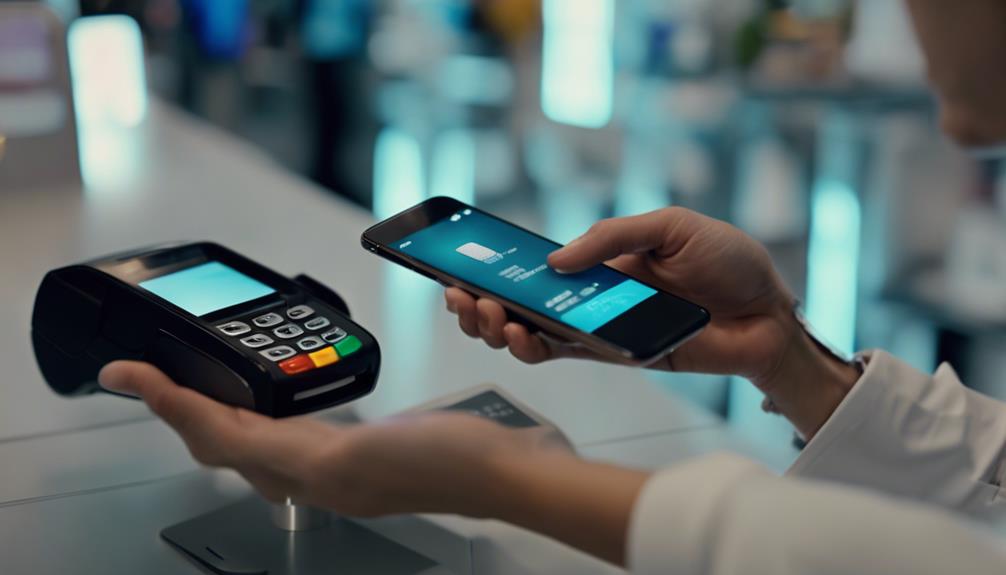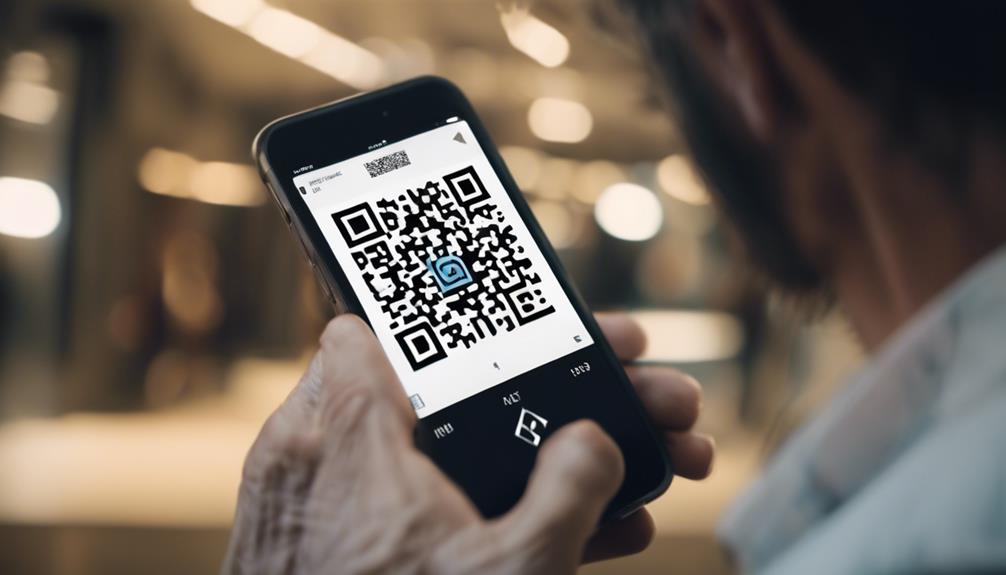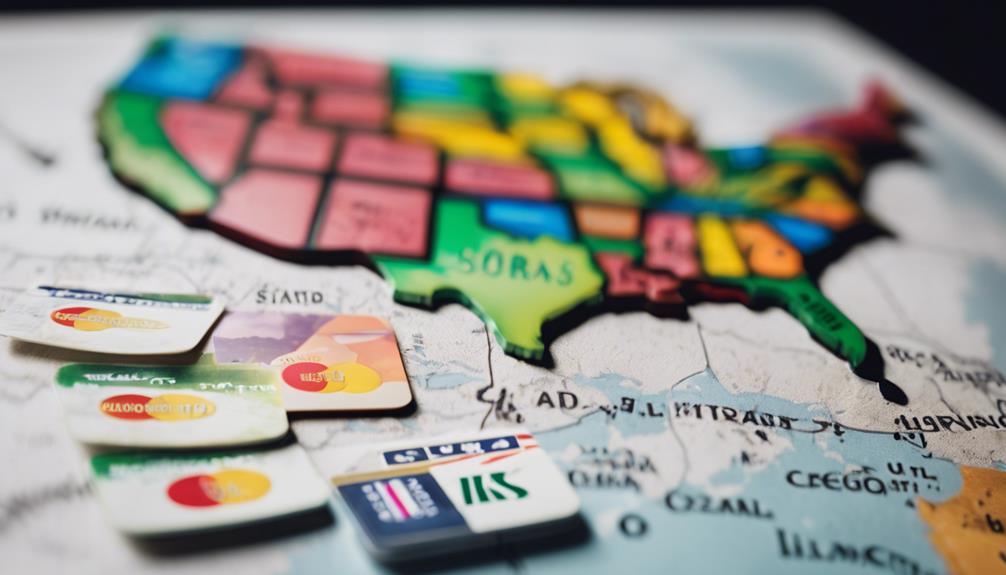To adapt to technological advances in payment processing, embrace digital innovations like mobile wallets and contactless payments for swift transactions. Incorporate biometric authentication for heightened security, using unique identifiers like fingerprints. Integrate Internet of Things (IoT) to enhance payment experiences with real-time transactions. Stay updated on cryptocurrency trends to navigate market volatility and security concerns effectively. Utilize AI and machine learning for robust fraud detection measures. Explore the potential of Central Bank Digital Currencies (CBDCs) for improved payment efficiency globally. Evolving alongside these advancements guarantees you remain at the forefront of efficient payment solutions.
Key Takeaways
- Implement biometric authentication for enhanced security.
- Integrate IoT for seamless and personalized payment experiences.
- Embrace mobile wallets for convenience and loyalty benefits.
- Adopt contactless payments for speed and touchless transactions.
- Utilize AI and machine learning for fraud detection and prevention.
Payment Systems Evolution
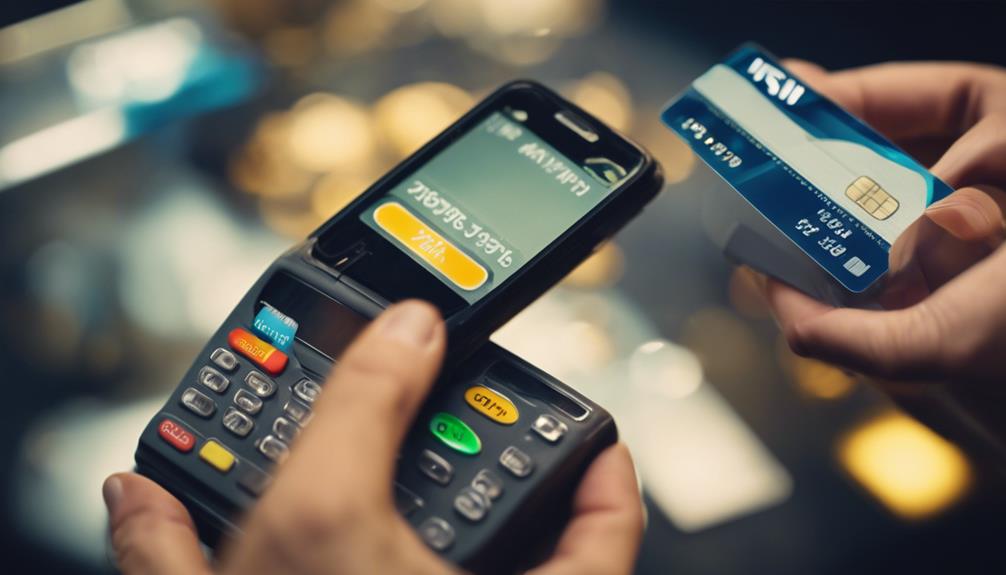
Payment systems have rapidly transformed due to the adoption of digital technologies and online transactions. The shift towards digital payments, mobile wallets, and contactless payments has revolutionized how individuals conduct financial transactions.
Mobile wallets, in particular, have become indispensable tools for consumers seeking convenience and security in their payment methods. With the rise of cashless transactions, the ease of making purchases using mobile devices has notably increased.
Moreover, the integration of biometric authentication in payment systems has enhanced security measures, making transactions more secure and seamless. As technology advances, the Internet of Things (IoT) has enabled interconnected devices to facilitate secure payment transactions, further streamlining the payment process for consumers.
These advancements in payment systems reflect a growing trend towards a more efficient and secure digital payment landscape, catering to the evolving needs of modern consumers seeking convenience and reliability in their financial transactions.
Biometric Authentication Implementation
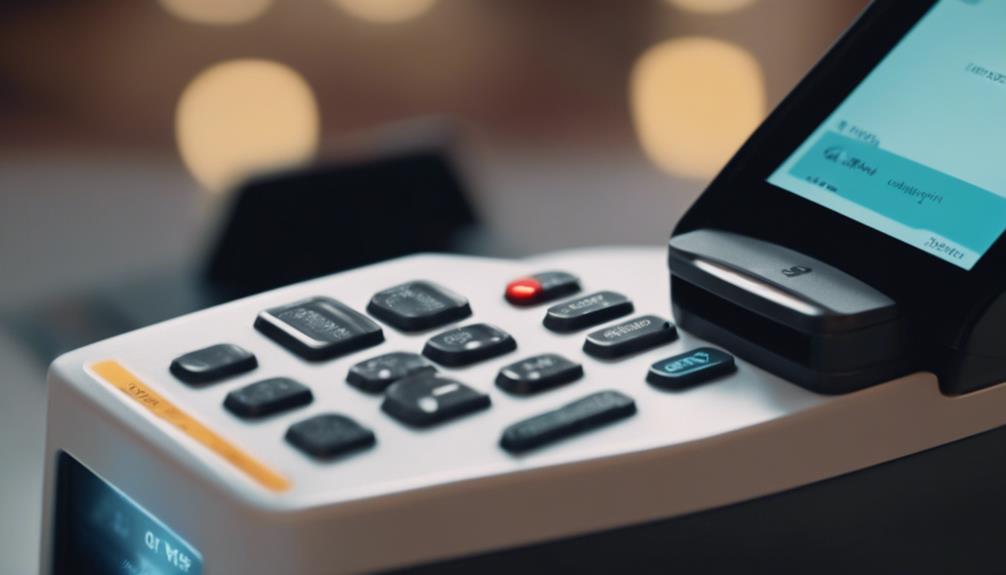
With the increasing demand for enhanced security measures in digital transactions, implementing biometric authentication has become a pivotal aspect of modern payment processing technology. Biometric authentication, utilizing unique physical characteristics like fingerprints or facial recognition, offers advanced security measures in payment verification. By reducing the risk of fraud and unauthorized access, this technology enhances security during transactions. Biometric data is encrypted and securely stored, ensuring user privacy and protecting against identity theft.
One of the key benefits of biometric authentication is its seamless user experience. By eliminating the need for passwords or PINs, users can enjoy a convenient and efficient payment process. The adoption of biometric authentication in payment processing is rapidly growing, with more devices and platforms integrating this secure verification method. As this trend continues, users can expect an increased focus on security, fraud prevention, and user privacy in the digital payment landscape.
IoT Integration in Payments
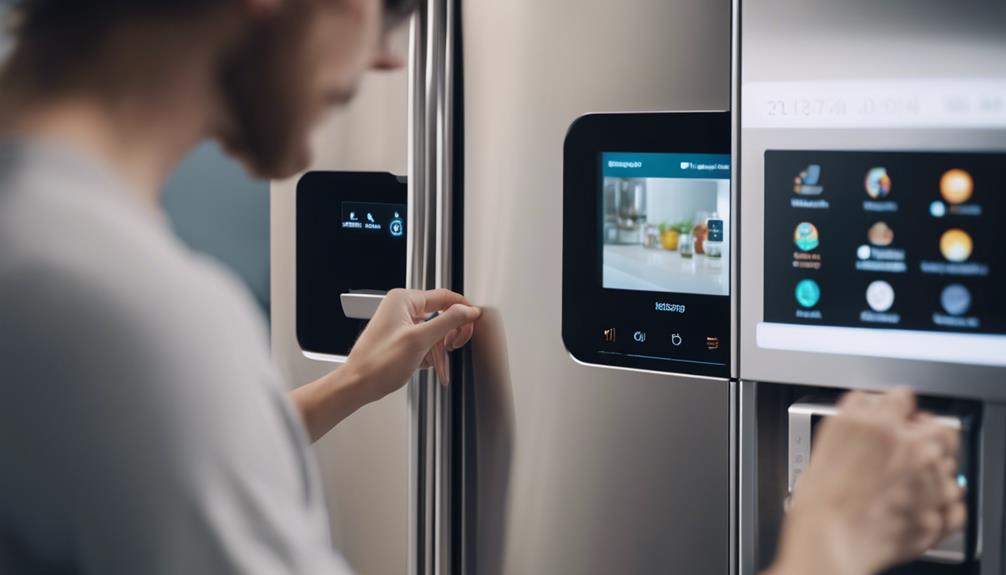
Integrating IoT technology into payment systems revolutionizes transaction processes by enabling connected devices to securely process transactions in real-time. This digital evolution allows for seamless payment experiences, connecting various IoT devices like wearables, smart appliances, and vehicles to payment systems.
The integration of IoT in payments enhances convenience through automated transactions, reducing the need for manual intervention. One key driver behind the growth of IoT in payments is its capacity to provide personalized and contextual payment solutions tailored to individual needs. With IoT integration, payment data can be securely transmitted, authenticated, and processed across a network of interconnected devices.
This interconnected system guarantees that transactions are swift, secure, and tailored to the user's preferences, offering a more efficient and personalized payment experience. As IoT continues to advance, its integration with payment systems will likely further streamline transactions and enhance the overall efficiency of digital payments.
Mobile Wallet Usage Trends
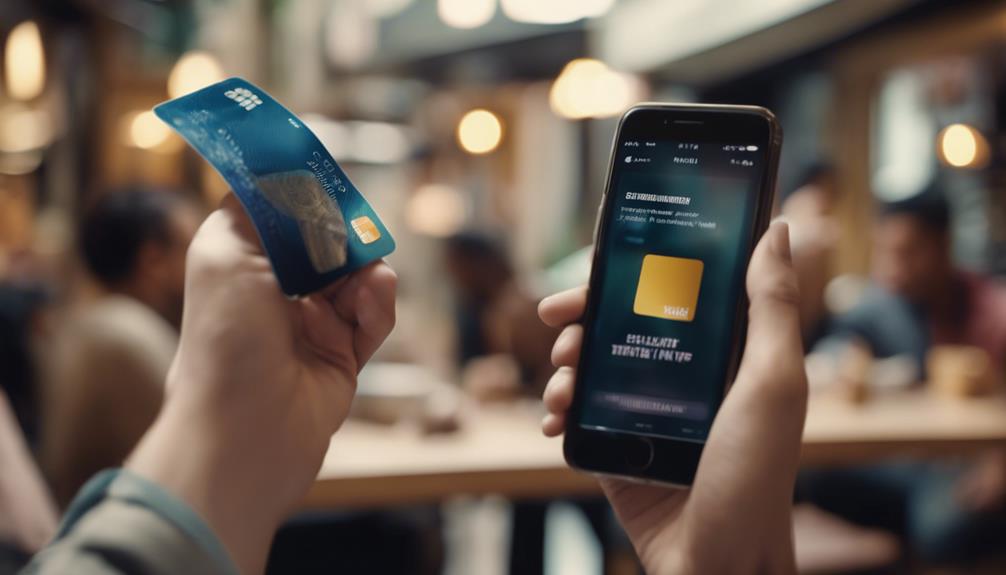
Embracing the convenience and security of mobile wallets is becoming increasingly prevalent as global usage trends indicate a significant rise in adoption. With over 2.1 billion mobile wallet users expected by 2025 and transactions surpassing $2.7 trillion in 2020, it's evident that this payment method is gaining traction. Asia-Pacific, particularly China and India, leads in mobile wallet adoption, driving the growth worldwide.
Mobile wallets offer not only convenience but also security features like biometric authentication and encryption, ensuring safe transactions for users. The integration of loyalty programs and discounts further incentivizes individuals to shift towards this digital payment solution. By combining payment capabilities with loyalty rewards, users are encouraged to make mobile wallets a preferred choice in their daily transactions.
As global adoption continues to surge, the focus on enhancing security measures and integrating additional benefits will likely solidify mobile wallets as a mainstream payment option in the years to come.
Contactless Payment Adoption

Contactless payments offer you convenience and speed in your transactions, reflecting the modern shift towards touchless solutions. With features like mobile wallets and NFC technology, you can now securely make payments both in-store and online.
The growing adoption of contactless options in businesses aligns with the increased consumer preference for quick and hygienic payment methods.
Contactless Payment Benefits
Amidst the evolving landscape of payment processing technology, tapping into the benefits of contactless payments can revolutionize your transaction experience.
Enhanced Security: By reducing physical contact with payment terminals, contactless payments offer safer transactions, lowering the risk of fraud and germs transmission.
Efficiency and Speed: The quick and efficient nature of contactless payments makes them a preferred choice for seamless transactions, enhancing customer satisfaction and streamlining the payment process.
Consumer Behavior Shift: The 41% rise in contactless payment adoption in 2020 reflects a significant change in consumer behavior towards touch-free transactions, pushing businesses to integrate these options to meet the growing demand in the post-pandemic world.
Security in Payments
With the surge in contactless payment adoption and the integration of biometric authentication methods, security in payments has greatly evolved to enhance transaction safety and user experience. Biometric authentication, such as fingerprint and facial recognition, adds an extra layer of security to contactless payments.
NFC technology allows for secure tap or touch transactions, ensuring data protection during payments. Contactless payments not only prioritize security but also promote transaction hygiene by reducing physical interactions.
Mobile wallets like Apple Pay and Google Pay further facilitate seamless contactless transactions, offering users a convenient and safe payment option. Embracing these advancements in security measures and transaction technologies enhances the overall reliability and trustworthiness of contactless payment systems.
P2P Payment Solutions Impact

The impact of P2P payment solutions on modern financial transactions is undeniable. These platforms, such as Venmo and Cash App, have processed over $300 billion in transactions in 2020 alone. Here are three key ways in which P2P payment solutions are influencing the way we handle money:
- Convenience: With mobile payments, individuals can make instant money transfers at the touch of a button, eliminating the need for physical cash or lengthy bank transfers.
- Social Transactions: P2P platforms have revolutionized how people split bills, pay friends, and engage in social transactions. It has become common to use these solutions for everyday interactions, making financial exchanges more seamless.
- Security Features: Mobile P2P payments are favored for their security features, providing users with a safe way to transfer funds. Additionally, these solutions offer seamless integration with social networks, enhancing user experience and accessibility.
Cryptocurrency Influence on Transactions

Cryptocurrency transactions have gained popularity due to their efficiency and transparency. Security concerns and market volatility are significant factors that influence cryptocurrency transactions.
It's essential to understand these aspects to navigate the evolving landscape of digital currency transactions effectively.
Cryptocurrency Security Concerns
In the midst of the changing landscape of payment processing technology, addressing cryptocurrency security concerns presents a significant challenge for transactions.
When dealing with cryptocurrency, cyber attacks are a real threat that can result in hacking, fraud, and theft, given the decentralized nature of blockchain technology.
To protect your digital assets, consider using secure storage methods like hardware wallets and cold storage solutions. Additionally, staying informed about potential threats and implementing best practices in cybersecurity are vital steps to safeguard your cryptocurrency holdings.
Cryptocurrency Market Volatility
Exploring the world of cryptocurrency transactions requires a vital awareness of market volatility and its impact on transaction values. The cryptocurrency market volatility can result in prices fluctuating rapidly, leading to sudden price changes that affect the overall value of transactions. This unpredictability introduces financial risks, making it essential for individuals and businesses to monitor market trends closely.
The challenges posed by cryptocurrency market volatility extend to pricing goods or services accurately, as the value can vary greatly within short periods. To navigate these fluctuations successfully, staying informed about the market and being prepared to adapt to sudden shifts in prices are key steps in managing the risks associated with cryptocurrency transactions.
AI and Machine Learning Security

Utilizing AI and machine learning enhances security measures in payment processing by identifying potential fraud patterns and anomalies. These advanced technologies play an essential role in safeguarding sensitive financial information and preventing unauthorized access.
Machine learning algorithms analyze vast amounts of data to detect fraudulent activities in real-time, ensuring secure authentication and protecting payment data from cyber threats. Additionally, AI-powered systems continuously learn and adapt to new security challenges, improving overall cybersecurity defenses in payment transactions.
By leveraging these innovative tools, payment processors can stay ahead of potential risks, mitigate fraudulent behavior, and enhance the overall security of transactions. Embracing AI and machine learning not only boosts fraud detection capabilities but also instills confidence in consumers regarding the safety and integrity of their financial transactions.
Trust in secure payment processing systems is paramount in today's digital landscape, and these technologies are at the forefront of ensuring a safe and reliable payment environment.
Future of Central Bank Digital Currencies

Amidst the evolving landscape of financial systems, the future of Central Bank Digital Currencies (CBDCs) holds significant potential for revolutionizing payment mechanisms worldwide.
CBDCs, as digital forms of a country's fiat currency issued by the central bank, are designed to enhance payment efficiency, reduce costs, and promote financial inclusion. China's digital currency electronic payment (DCEP) project stands out as one of the most advanced CBDC initiatives globally.
One of the key advantages of CBDCs is their potential to streamline cross-border payments, potentially reducing reliance on traditional banking systems. Despite these benefits, concerns have been raised regarding privacy, security, and the potential impact on commercial banks within the financial ecosystem.
As central banks continue to explore the implementation of CBDCs, balancing innovation with security and stability remains essential for the successful integration of these digital currencies into the global payment landscape.
Frequently Asked Questions
What Is the Impact of Technology on Payment Processes?
Technology has greatly impacted payment processes, revolutionizing how businesses handle transactions. Digital advancements have led to faster, more secure payments, reducing reliance on traditional methods.
Innovations like AI and machine learning streamline tasks, enhancing efficiency and accuracy. Integration of technology facilitates global transactions, making cross-border payments seamless.
Emerging tech such as blockchain and biometric authentication offer increased security and transparency. The transformative power of technology in payments is reshaping the financial landscape.
Which Is a Technology That Can Be Used for Payment Processing?
When considering technology for payment processing, blockchain stands out. Its secure and transparent nature makes it a reliable option.
Biometric authentication, like fingerprints and facial recognition, adds an extra layer of security.
IoT devices facilitate connected and seamless transactions, while mobile wallets offer convenience.
Contactless methods, such as tap transactions, are gaining popularity for their hygiene and ease.
Embracing these technologies can enhance your payment processes efficiently.
What Is the Strongest Current Trend in Payment Processing?
The strongest current trend in payment processing is the increasing popularity of contactless payments, which have surged by 41% in 2020. This trend emphasizes the preference for convenient and hygienic transactions.
Additionally, the rise of mobile wallets and digital payment solutions like Apple Pay and Google Wallet showcases a move towards seamless and secure payment methods.
Biometric authentication methods, such as fingerprint and facial recognition, are also gaining traction, highlighting a growing focus on user authentication.
What Are the Payment Technology Innovations?
Payment technology innovations encompass various advancements like biometric authentication and blockchain integration for secure transactions.
The Internet of Things enables connected devices for seamless payment experiences, while the rise of cashless transactions drives the adoption of digital payment solutions.
Mobile wallets have become essential tools for convenient and secure financial transactions.
Embrace these innovations to stay ahead in the evolving landscape of payment processing.
Conclusion
As technology continues to advance, the payment processing industry must adapt to meet the changing needs of consumers.
From biometric authentication to cryptocurrency transactions, the landscape of payments is evolving rapidly.
The future holds exciting possibilities, but also raises important questions about security and convenience.
How will these advancements shape the way we handle our finances in the years to come? Only time will tell.
Stay informed and be prepared for what lies ahead in the world of payment processing.

